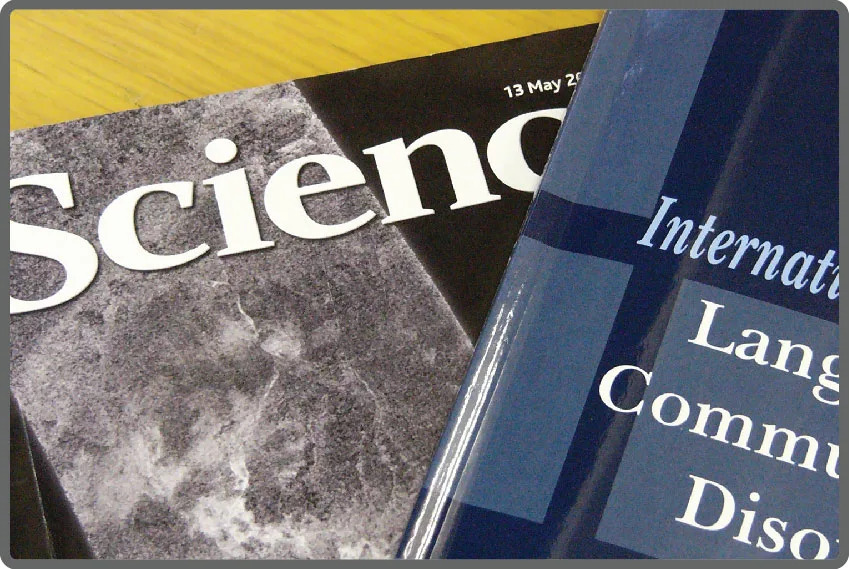To write authoritatively in your field, you first need to identify the elements of style used and then incorporate them in your writing. You can take an ad-hoc or a systematic approach to help you identify these elements of style.
- Look out for writing conventions while reading high-quality English papers published in top-tier journals in your field. Usually, these papers have been professionally copyedited to ensure that the published text follows each journal's formatting guidelines and writing conventions used in your discipline. Also, some journals give specific instructions or guidance on the writing conventions that they want you to follow in their guidelines for authors.
- Examine the writing style used by specialist editors who edit your papers. Specialist editors know the writing conventions used in their particular fields and apply them when editing. You can check the revisions our editors make to your papers by reviewing the changes tracked in the "-1view" files we provide.
- Consult a published style guide to take a more systematic approach to learning the style used in your field. There are many style guides in use, so you need to consult the most appropriate one for your subject area. You won't need to learn all the conventions stated in a guide unless you want to (that an editor's job!), but you can find out commonly used conventions to start using in your writing.
Here at ThinkSCIENCE, we most commonly use these style guides.
Although the aim of each style guide is the same—to promote clear, accurate, and authoritative writing that is appropriate to the field—the contents often differ between the guides, sometimes obviously and sometimes more subtly. Let's look at an example of each.
An obvious difference that exists between the style guides concerns the treatment of numerals. Although some conventions for using numerals are consistent across the style guides—for instance, a number at the beginning of a sentence should be spelled out in full, and numerals must be used whenever a number is paired with a unit ("5 km," not "five km")—the conventions for reporting numbers in running text can vary greatly. Some style guides have pages of conventions on just this topic. Following these conventions is particularly helpful when the text contains many numerals in close proximity. It also ensures consistency of reporting throughout the paper, which improves readability.
Here's how a section of text containing various numerals would differ according to the style guide used.
| APA |
Chicago |
CSE |
| The study area included 12 cities in three prefectures. One hundred and fifteen schools were sent surveys and 13,321 individual responses were collected. |
The study area included twelve cities in three prefectures. One hundred fifteen schools were sent surveys and 13,321 individual responses were collected. |
The study area included 12 cities in 3 prefectures. A total of 115 schools were sent surveys and 13 321 individual responses were collected. |
| APA generally spells out numbers up to and including 10, and uses numerals for 11 and higher. Numerals cannot begin a sentence, and so should be spelled out in full. Numerals with five or more digits are grouped using a comma. |
Chicago generally spells out words between 0 and 100 when used non-technically. Numerals cannot begin a sentence, and so should be spelled out in full. Chicago also requires that "and" not be used when numbers are written out. Numerals with five or more digits are grouped using a comma. |
CSE prefers to use numerals for quantities wherever possible. As in other styles, numerals cannot begin a sentence, but CSE recommends instead rewording the sentence so that numerals can be used. Numerals with five or more digits are grouped using a thin space, but CSE notes that regional conventions should be followed, such as a comma for American audiences. |
Let's look now at a more subtle difference between the style guides. The following example shows how the title of a work might change depending on the style guide applied.
| AMA |
Long-term Changes in Decision to Treat X With Y |
| AMA does not capitalize the second item in hyphenated phrases using a prefix, and capitalizes prepositions as long as they are 4 letters or longer. |
| MLA |
Long-Term Changes in Decision to Treat X with Y |
| MLA capitalizes the second item in all hyphenated phrases, but writes all prepositions in lowercase, regardless of length. |
| ACS |
Long-term Changes in Decision To Treat X with Y |
| ACS does not capitalize the second item in hyphenated phrases using a prefix, writes all prepositions in lowercase, and also capitalizes the "to" in infinitive verbs. |
Many journals and publishers will base their house style on a particular style guide and then make minor modifications to suit their specific needs. So, when you are writing for a specific journal, it's important to remember that the journal's style takes precedence over the general style mentioned in style guides. First and foremost, follow any specific writing conventions stated in the journal's guidelines, and then follow the general writing conventions in your field as a "fallback" default style.
As a final point of note, if you spend time and effort learning to apply the writing conventions in your field in your writing and then you ask someone who is not familiar with your field to edit your text, he or she could very quickly undo all of your hard work. You can always ask whether an editor will follow the particular writing style used in your field. ThinkSCIENCE editors know the writing conventions used in their subject areas, and we're happy for you to ask us any specific questions about writing style when we're editing your papers.



